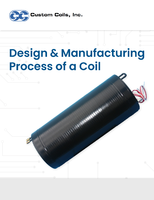Rotary Indexing Wet-Blast Machine prepares critical surfaces.
Share:
Press Release Summary:
Incorporating rotary spindles, 48 in. dia table with precision 120° cam indexer, and programmable linear nozzle motion, Vaqua 72 x 72 meets surface preparation requirements of turbomachinery component and precision product manufacturers. Abrasive slurry blasting system processes parts up to 30 in. high x 12 in. dia. Fabricated of polished 304 stainless steel, process enclosure of this 72 x 72 in. machine isolates slurry-blast operation from rinsing zone and front load-unload station.
Original Press Release:
Rotary Indexing Wet-Blast Machine Prepares Critical Surfaces
Guyson Corporation offers an expanded-capacity abrasive slurry blasting system with rotary spindles, an indexing table and programmable linear nozzle motion for the specialized surface preparation requirements of manufacturers of turbomachinery components and precision products. The Vaqua 72 x 72 rotary wet-blast machine processes parts up to 30 inches in height and 12 inches in diameter.
The process enclosure of the 72 x 72-inch machine, fabricated entirely of polished 304 stainless steel, is divided into two chambers to isolate the slurry-blast operation from a rinsing zone and the front load-unload station. The precision 120-degree cam indexer of the 48-inch diameter table is sufficiently accurate to allow automated loading by a robot or pick-and-place device. At each index, the partition doors are made watertight by inflatable seals.
Inside the wet-blasting chamber, six Vaqua slurry-blast guns are arranged on a mast attached to a roof-mounted linear actuator. Multi-adjustable brackets enable the wet blasting guns to be rigidly positioned at the correct angles and offsets for coverage of target surfaces The component, fixtured securely on a shielded ball bearing spindle, is rotated at controlled and adjustable speed, as the blast guns move up or down in the vertical axis, according to the stroke distance, traversing speed, location and stroke count that is programmed in the process recipe for the individual part.
To regulate the aggressiveness of the wet-blasting process and the characteristic scrubbing action of the media particles on component surfaces, the volume and pressure of compressed air injected into the blast guns is accurately controlled, as is the total volume of slurry delivered to the guns. The compressed air serves to accelerate the slurry and project it onto the work, but also to dissipate the abrasive-and-water mixture.
A compact touch screen human-machine interface (HMI) is installed on a height-adjustable swing arm to allow convenient operator access to real-time process data, such as blast pressure. The HMI also provides password-protected access to files on the system’s programmable logic controller, so process recipe values for a new component can be entered without the use of external computer hardware or software.
The abrasive grit in the blasting slurry is agitated and kept in suspension by diversion of a portion of the pumped mixture to a bypass line that discharges through a jet at the bottom of the purposefully-designed wet-blast cabinet hopper. Constant and thorough stirring and circulation of the slurry maintains the uniformity of the media concentration to ensure consistency in the finishing or surface preparation process.
Prospective users of automated or robotic wet blasting equipment are encouraged to submit sample components for free laboratory testing and application engineering evaluation at the Guyson factory in northeastern New York State.




